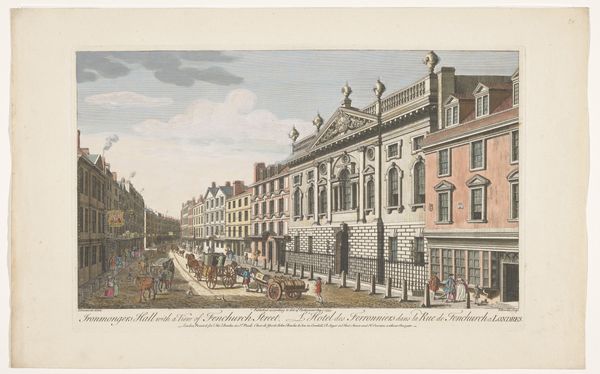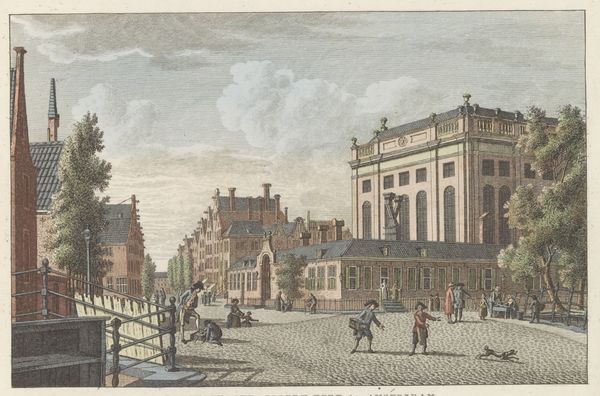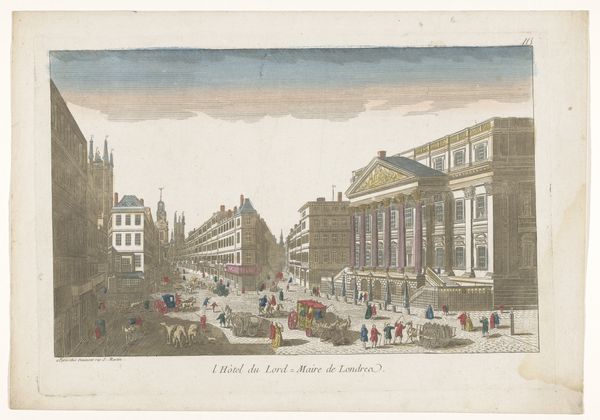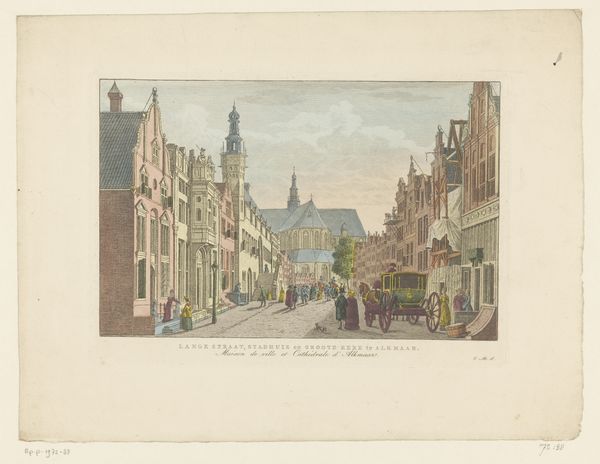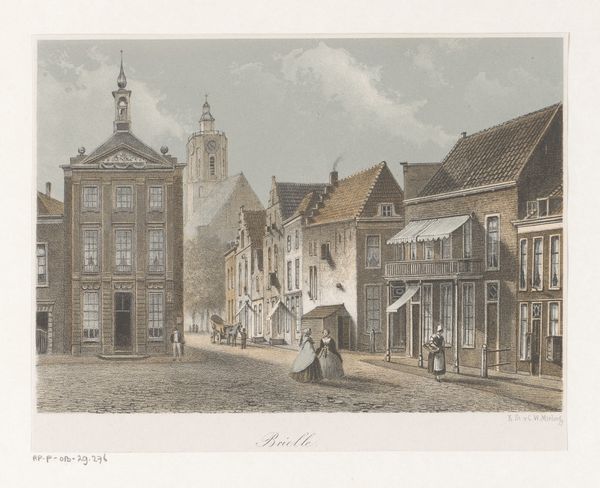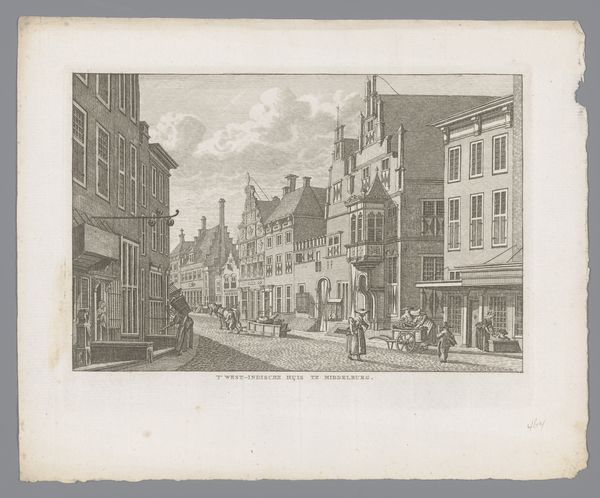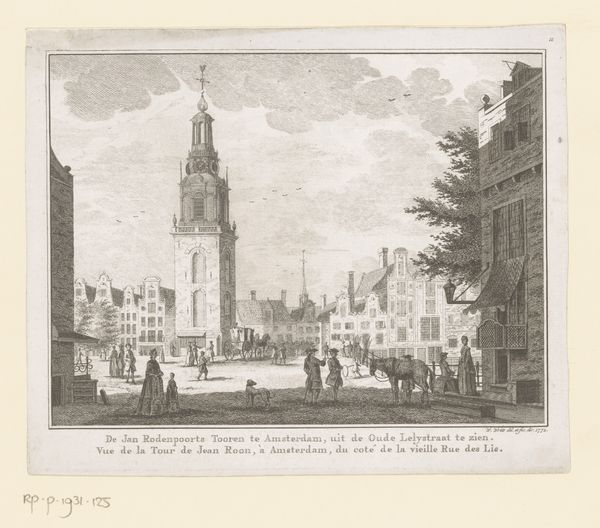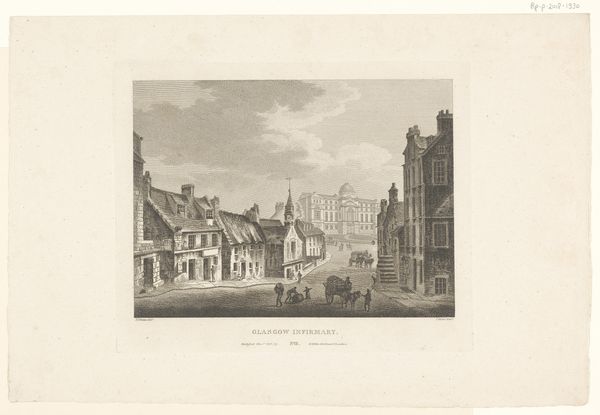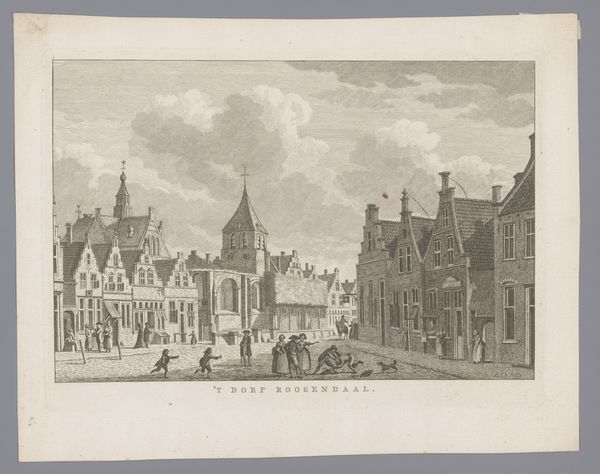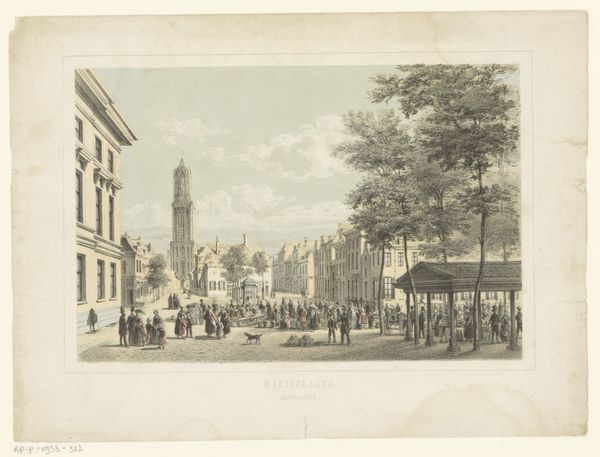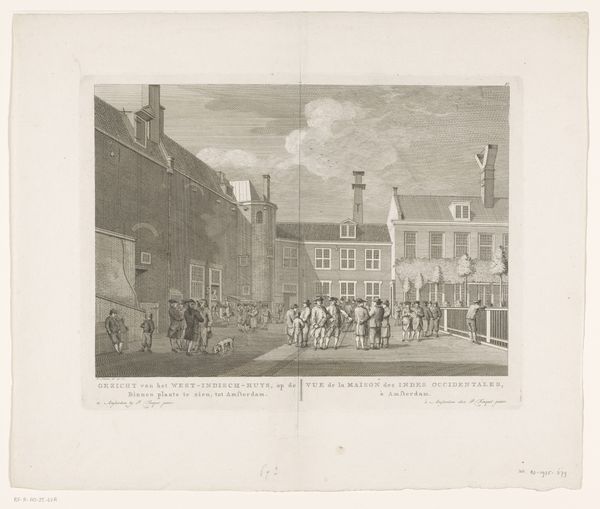
Dimensions: height 235 mm, width 300 mm
Copyright: Rijks Museum: Open Domain
Carel Christiaan Antony Last made this print of the Weigh House in Groningen using lithography, a process that democratized image-making in the 19th century. Lithography involves drawing on a flat stone or metal plate with a greasy crayon, then using oil-based inks to transfer the image onto paper. The resulting prints, like this one, have a distinctive soft, velvety texture, quite different from the crisp lines of an etching or engraving. Look closely, and you can see how Last used subtle gradations of tone to capture the bustling atmosphere of the marketplace. Lithography enabled the mass production of images, fueling a growing consumer culture. Consider the labor involved in quarrying the limestone, preparing the printing plates, and running the presses. This print isn't just a depiction of a marketplace, it’s a product of the same forces that shaped it. By understanding the materials and processes behind it, we can appreciate how this artwork reflects the social and economic landscape of its time, blurring the lines between art, craft, and industry.
Comments
No comments
Be the first to comment and join the conversation on the ultimate creative platform.
